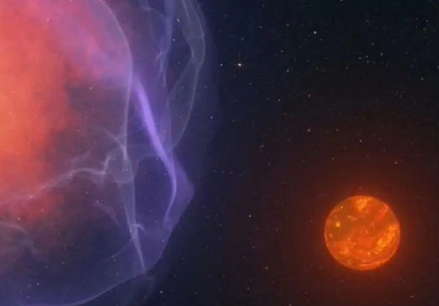“In the vastness of the cosmos, it’s often the keen eyes of citizen scientists that spot the anomalies and patterns leading to groundbreaking discoveries.” — Deborah Byrd, Founder of EarthSky
“Astronomy has always been a field open to anyone with a telescope and a passion for the stars. Today’s citizen scientists continue this tradition, making discoveries that even the most advanced instruments might miss.” — Neil deGrasse Tyson, Astrophysicist
In a remarkable discovery that underscores the power of collaborative science, a group of citizen scientists working with NASA has identified a hypervelocity object, named CWISE J1249, that is rapidly making its way out of the Milky Way. This discovery, fueled by data from NASA’s Wide-field Infrared Explorer (WISE) mission, showcases the critical role that amateur astronomers play in advancing our understanding of the universe.
CWISE J1249 is no ordinary celestial body. It is moving at an extraordinary speed of approximately 1 million miles per hour, fast enough to escape the gravitational pull of the Milky Way. What makes this object even more intriguing is its low mass, which places it on the borderline between a small star and a brown dwarf—a celestial object that doesn’t sustain steady hydrogen fusion in its core.
Mysterious Object Travelling At 1 Million Miles Per Hour Zooming Out Of Milky Way: NASA#MilkyWay #NASA #space #citizenscientistshttps://t.co/JEQrTFYTJh
— India.com (@indiacom) August 18, 2024
This discovery was made possible through NASA’s Backyard Worlds: Planet 9 project, a citizen science initiative that enables volunteers to analyze WISE mission data to identify unusual space objects. Among the keen-eyed volunteers were Martin Kabatnik, Thomas P. Bickle, and Dan Caselden, who first noticed the fast-moving object on their screens. Their observations were later confirmed through follow-up studies using ground-based telescopes.
The unique composition of CWISE J1249 adds another layer of mystery. Data from the W. M. Keck Observatory in Hawaii revealed that this object contains significantly less iron and other metals compared to typical stars and brown dwarfs. This unusual makeup suggests that CWISE J1249 may be incredibly old, possibly originating from one of the first generations of stars in our galaxy.
But why is CWISE J1249 traveling at such a high speed? Scientists have proposed several theories. One hypothesis is that the object was once part of a binary star system, where its companion star exploded as a supernova, propelling CWISE J1249 into space. Another possibility is that it was ejected from a densely packed globular cluster after a close encounter with a pair of black holes.
The discovery of CWISE J1249 is not just a testament to the power of citizen science but also a reminder of the vast and dynamic processes at play in our galaxy. Adam Burgasser, a professor at the University of California, San Diego, led the study, which includes contributions from both amateur and professional astronomers, as well as students who began their journey into astronomy through citizen science.
#SCIENCE : NASA Citizen Scientists Uncover Mysterious Object Traveling at 1 Million Miles per Hour#NASA #discover #Object #Mysterious #MilkyWay #gravity pic.twitter.com/mXdGljRGVg
— mishikasingh (@mishika_singh) August 18, 2024
This groundbreaking find offers a glimpse into the complex interactions that shape our universe and opens the door for future discoveries. For those inspired by this discovery, NASA’s Backyard Worlds: Planet 9 project continues to welcome new volunteers from around the globe, inviting everyone to participate in the ongoing search for cosmic phenomena.
The study, “Discovery of a Hypervelocity L Subdwarf at the Star/Brown Dwarf Mass Limit,” was published in The Astrophysical Journal Letters and marks a significant milestone in our understanding of hypervelocity objects in the cosmos.
Quotes
- “From exoplanets to new comets, the contributions of citizen scientists to astronomy remind us that the universe is too vast to be explored by professionals alone.” — Brian Cox, Physicist
- “The night sky belongs to everyone, and so does the pursuit of understanding it. Citizen scientists play a crucial role in uncovering its secrets, one discovery at a time.” — Sara Seager, Planetary Scientist and Astrophysicist
- “Some of the most significant discoveries in astronomy have come from the diligence and dedication of citizen scientists, whose work adds invaluable data to our understanding of the cosmos.” — Jill Tarter, Astronomer and Co-Founder of SETI
Key Points:
i. Citizen scientists collaborating with NASA discovered a unique hypervelocity object, CWISE J1249, moving out of the Milky Way.
ii. This object, possibly a low-mass star or brown dwarf, exhibits a rare, ancient composition and speeds of about 1 million miles per hour.
iii. Theories suggest it might have been ejected from a binary system following a supernova or flung out by black holes from a globular cluster.
iv. The discovery highlights the significant contributions of amateur astronomers to groundbreaking scientific research.
v. The study was published in The Astrophysical Journal Letters and invites global participation in ongoing cosmic discoveries.
Kirk Volo – Reprinted with permission of Whatfinger News

